- Home
- Scott Kenemore
Zombie, Indiana
Zombie, Indiana Read online
Copyright © 2014 by Scott Kenemore
All Rights Reserved. No part of this book may be reproduced in any manner without the express written consent of the publisher, except in the case of brief excerpts in critical reviews or articles. All inquiries should be addressed to Talos Press, 307 West 36th Street, 11th Floor, New York, NY 10018.
Talos Press books may be purchased in bulk at special discounts for sales promotion, corporate gifts, fund-raising, or educational purposes. Special editions can also be created to specifications. For details, contact the Special Sales Department, Talos Press, 307 West 36th Street, 11th Floor, New York, NY 10018 or [email protected].
Talos Press is an imprint of Skyhorse Publishing, Inc.®, a Delaware corporation.
Visit our website at www.skyhorsepublishing.com.
10 9 8 7 6 5 4 3 2 1
Library of Congress Cataloging-in-Publication Data
Kenemore, Scott.
Zombie, Indiana : a novel / Scott Kenemore.
pages cm
ISBN 978-1-940456-00-3 (pbk.: alk. paper) 1. Zombies—Fiction. 2. Missing persons—Fiction. 3. Indiana—Fiction. I. Title.
PS3611.E545Z65 2014
813’.6—dc23
2014000506
Cover photo credit Thinkstock.com
Ebook ISBN: 978-1-940456-03-4
Printed in the United States of America
Dedicated to the memory of Mr. Greg Foote
“You cannot kill it, it is dead; at the same time it lives.
It lives with a sinister life bestowed on it by Infinity.”
Victor Hugo,
Ninety-Three
“Have we a chance when the dead rise and dance?
Have we the time for the final romance?”
Motörhead,
“Terminal Show”
“We have not attained an ideal condition.”
Benjamin Harrison,
Inaugural Address,
March 4, 1889
1
“A New Indiana.”
The governor looked at the campaign banner on the wall of his office—the banner that was now almost eight years old.
In the quiet at the end of the workday, he found it pleasant to stop and consider all of the progress that had been made since his first weeks in office. He looked out of his window, out to the Soldiers and Sailors Monument a block and a half away. The three-hundred-foot column that marked the center of Indianapolis looked glorious in the late afternoon sun.
A New Indiana. Good Christ. They had almost done it. They were almost there.
If any state had changed during the governor’s relatively short lifetime, it was his. He was only fifty, young for a governor nearing the end of two terms. But when he thought about how much the state had changed, he felt older. So much older.
Governor Hank Burleson could remember the bad old days. He certainly could. The seventies. The eighties. Downtown Indianapolis so dangerous you got in and out like SEALs on a mission. Burleson could recall going to Pacers games with his dad—back when the coaches wore plaid, and the ball was red, white, and blue—and good Lord, after the game was over, you more or less ran for your car. Now it was different. Now people came downtown and lingered. Spent money. It was safe. There were museums, and a mall, and an honest-to-God canal, and it was all—all of it—walkable.
The state had no debt and no pensions to pay. It had no ties to any entity with financial problems. It had the highest credit rating the agencies could give you. Indiana was growing like gangbusters.
The governor reclined on the brown leather couch usually reserved for visiting dignitaries (if you wanted to call state senators “dignitaries”). He smoked a Cuban cigar. You could get them in the Hoosier State now. Not legally, of course. But still . . . you could get a lot of things in Indiana these days.
Other states had done it fast, Burleson reckoned. Fast, sure. Fast had its merits. Everybody liked fast. But Indiana was going to do it right.
On the far side of Burleson’s office was a map of the U.S.A. He puffed on his cigar and stared hard at the other states that made up the American Midwest. These were the competition. The enemy. And soon, Burleson thought, they would be the vanquished enemy.
The governor let his eyes wander across the map.
Up above was Michigan. That was a gimmie. It was moldering. Rotting from the inside out. The population shrinking. Detroit already bankrupt—a cadaver on a slab. The auto industry half-gone, and those losses weren’t coming back. On the Internet there were satellite pictures of Detroit from the 1960s compared with satellite pictures from today. You could actually see the wilderness taking over again. All that concrete grey turning back to green. They were done up there. Done.
The governor cast his gaze westward, to Illinois. It would topple next, with Chicago serving as the weight to send it careening down into the abyss. High taxes. Highly paid teachers and police. And yet a city full of delinquents with low test scores and 550 murders a year. Illinois’s credit rating was now the worst in the nation. Even worse than California’s. The population wasn’t growing as it once had, either. It hadn’t been the “Second City” since 1980, and Houston would soon overtake it to claim the number-three spot. Illinois was on the way down. On the way to irrelevancy. On the way to the trash heap. Burleson knew that the fall of Illinois would be the sweetest of all. He could not wait to savor it. He could not wait for Chicago to become the next Detroit.
And on the other side of the friendly Hoosier pylon? Ohio! Mighty Ohio. Stalwart. Friendly. And yet . . . it simply could not make up its mind. What did Ohio want to be, exactly? It didn’t know. It couldn’t tell you. In a way, this indecisiveness was quaint. It was like a little America. It had something for everyone. Half liberal, half conservative. Half urban, half rural. Black and white and Latino and everything else now. And all those different forces pushing every which way. And not a damn thing getting done. Cleveland in decline. Columbus still a glorified college town. And Cincinnati had gone whole-hog insane and built itself a creationist museum. (Was there any coming back from such a thing? The governor thought not.)
Out west—way out west—was Iowa. “Idiots Out Walking Around” was what that stood for. Burleson believed you couldn’t hold Iowa to the same standard as a regular state. That was just mean. Criticizing Iowa was like criticizing the relative at Thanksgiving dinner who’d flunked out of school in eighth grade but still liked to call you “stupid” after a couple of beers. (“Really, Uncle Larry? I’m stupid? I’m the stupid one at this table?”) Iowa had always been farmland, Burleson thought. John Deere and the Iowa Writers’ Workshop weren’t ever going to change that. Not by a damn shot. Also, it was boring there. So boring you’d just shudder. (Burleson had once heard that if you got some bad news from your doctor—only a few months to live, say—you should just move out to Iowa . . . because every day there felt like a goddamn eternity.)
Down below—the impaled victim of Indiana’s pointy end—was Kentucky. And Kentucky was content just to be Kentucky. It was like Indiana in so many ways, Burleson considered, yet fundamentally without ambition. They have the Derby. We have the 500. Fine. They have Ashley Judd, and we have John Mellencamp. Fine. But when they’d started making Louisville Sluggers across the border in Indiana in the 1970s, something had been lost. It was a small thing, sure. But symbolic. The day tradition and heritage had been outsourced. Ever since learning that, Burleson had never regarded Kentucky as anything of a threat to the Hoosier State’s coming dominance.
Then, finally, up to Wisconsin. Idiot Cheeseheads to the last. They had selected a cow for the image on the reverse side of their state quarter. That had given Burleson a deep sense of satisfaction. That told you everything you needed to know. A cow. There was not
hing to fear from these gentle bovines. There never had been.
No. It was the twenty-first century, and it was going to be the century of the Hoosier.
It was almost a nonsense word, “Hoosier.” Where had it come from? Nobody knew. There were theories, sure. Pioneers shouting, “Who’s there?” Combatants arguing about “whose ear” would be torn off. A contractor named Hoosier who’d built the bridge over the Ohio River. (Could it be that simple? That banal?) Some used the term disapprovingly. Some even used it as an insult. That would not last long, Burleson reckoned. Not by a damn sight.
Soon they would come to envy it. Or fear it . . .
Indiana was a state that worked. That was honest. That was clean. Not technically, of course. Not by some sort of “science standard.” But it looked clean. It looked beautiful. Landscaping and such. Landscaping everywhere. And fields that were green. Big beautiful fields where pesticides killed the insects almost the moment they touched down on the cornstalks.
Businesses were knocking down the door to get in. To be a part of it. Lately, Indiana had gotten brazen about poaching companies from other states. Burleson was behind this in no small way. Every time Illinois or Ohio passed another tax increase, billboards went up in Chicago and Cleveland. They said things like: “Come on IN: for lower taxes, business, and housing costs” or “Illinoyed by high taxes?” and had a big ol’ picture of Indiana right below it. Hell, they’d put one up in Times Square in New York City, just to see what would happen. Burleson loved these billboards with a deep, abiding passion. He had helped design many of them personally. But the billboards only opened the door. It was up to him to get the business owners inside and seal the deal.
Burleson’s pitch was simple: Indiana is the best place because you can come here and do whatever you want.
First of all, you could hire and fire workers at will. They’d made sure of that in the last legislative session. A few strokes of a pen, and the unions had been effectively castrated. That was the word Burleson liked to use whenever he made presentations. “Castrated.” It had a real impact, that word. Every business owner—every male one, anyway—winced when he heard it . . . but then smiled from ear to ear. (The unions might still be walking around with their junk, sure . . . but it couldn’t do anything anymore.) This right-to-work legislation was important to Burleson. It showed that Hoosiers had learned from the lessons that had brought down Detroit and would soon doom Chicago.
You could also come to Indiana and find high-tech workers, if that was what you wanted. Engineers from Purdue and Rose-Hulman. Top-of-their-field eggheads from IU or Notre Dame or Ball State. Indiana had some crazy-bright people. Crazy-bright. Kids who’d taken all the STEM classes, and then some. They were here and ready to work for you, yeah.
But also . . .
Also . . . in Indiana you could count on finding totally uneducated people happy to work in your plant or factory for a subsistence wage. We had that as well. Oh boy, did we have that. Less than a quarter of Hoosiers had any kind of college degree. Outside of the cities and centers of learning were plenty of farm towns where almost nobody went to school, and those folks were hungry for jobs and thankful for anything you wanted to offer.
What else, what else . . . ?
Environmental laws. Can’t forget those. Well, maybe you can. Because it seems like we do. Indiana had the least stringent environmental laws in the Midwest. Nationally, experts agreed that only West Virginia’s regulations were more permissive. You want to come here and pollute Indiana’s soil? We got you covered. The water? Go for it! Did you know that the tiny slice of the Hoosier State that touched Lake Michigan dumped more mercury into the lake than all the other states combined? And according to the EPA, no state released more toxic chemicals into its own waterways than Indiana. But what about the air? People forget about the air. But you can pollute that too! (Last time Burleson had checked, the American Lung Association said that four cities in Indiana had “problematic smog.” Smog! In Indiana! Who knew?!) And if you still weren’t sure that your company was going to be able to keep it up to code, there were always special exceptions to be granted to friends of the governor. Usually after a campaign contribution or two.
Finally—and perhaps most wonderfully, thought Burleson—you could come here and not be flummoxed by the culture. Indiana was nice! Hoosiers were nice! They went to church. They weren’t going to be all up in your face with the artsy stuff. Yeah, it was a “northern” state. It had been in the Union during the Civil War. But, c’mon . . . C’monnnnnn . . . This is you and me talkin’, here. Let’s be frank. Let’s be real. In the early twentieth century, over a quarter million Hoosiers had belonged to the KKK. That’s one out of every six people in the state. By 1925, most of the elected government—including the governor—were openly Klan members. That was no longer the case, of course. The codified, formalized hostility had gradually faded away. But there was still that underlying feeling that this was not the place to be too artsy. Or gay. Or different. Or weird.
More than anything, Governor Burleson found this the most wonderful thing about his state. This stern, head-shaking sense of “Nope, we don’t put up with that here,” which some Hoosiers could telegraph without saying a single word! It kept things orderly better than any social program ever could. Cheaper, too.
You see—Burleson would announce to the cornered business executive—Hoosiers were self-regulating. It was in their DNA to do the things businesses wanted them to do. To be the way that businesses wanted them to be. We’re already like that. Being that way is what we Hoosiers know.
Yep. All things considered, selling the Hoosier State was not the hardest job Governor Burleson had ever had.
These days, however, jobs were increasingly on his mind. Maybe not “jobs” plural, but a job. His job. The one he had was about to run out. Governors were limited to two consecutive terms. He’d considered a run for the senate, sure, but no way was he going to risk getting into a race while some Tea Partier could still jump in and fuck everything up for everybody. (Poor Dick Lugar. May he rest in peace.) Still, there were other employment options until a run for Congress looked more reasonable. There was consulting. Boards of directors of corporations were already calling. Dan Quayle had been in touch personally about a possible opening at a friend’s firm. And then all manner of colleges and universities across the Hoosier State had invited him to join their political science faculties as a well-paid “guest lecturer.”
There would be no shortage of sinecures to hold him over, the governor knew. He would have his choices out in the private sector. But Christ, thought Burleson. Christ, it would be hard to be out of the game, even for a little while. He loved the game. Loved it so much. It was who he was.
Still, you did what you had to do, especially when prospects for a congressional run looked shaky. So he would bide his time. Yes, he would.
Even the brightest star, Burleson considered, was entitled to an occasional eclipse. And that was him. The Hoosier State’s brightest political star.
***
Burleson finished his cigar and dropped the butt in his ashtray. When he was satisfied that the majority of the smoke had drifted out his window, he stood on a chair and reactivated the small white smoke detector affixed to the ceiling.
Halfway through this task, his desk phone rang, unexpected and loud. The governor started and his knees went shaky. The chair underneath him quivered crazily . . . but did not quite topple.
Burleson regained his footing and took a deep breath.
Wouldn’t that have been something? Weeks from finishing up his term, and the governor of Indiana dies of an unexplained fall inside his own damn office.
In a trice, Burleson pictured it all. The flags at half-staff on the capitol building. The elegant state funeral. The casket on display underneath a marble rotunda, his wife and daughter weeping respectfully beside it. The unsuccessful push to have I-465 named after him. (A building at his college would eventually get the honor.) He could see it al
l, clear as day.
Fuck that.
Burleson leapt off the chair with the vim of a younger man and landed on the carpeted floor with a muffled thud. He still had lots of life left in him. Maybe another fifty years. Really, he assured himself, he was just getting started.
So . . . who the hell was calling during cigar time? His receptionist had been given explicit instructions that nothing short of hell or high water should ever interrupt cigar time.
The governor strode to the telephone and put the receiver to his ear.
“Yes,” he said sternly.
The voice that came back was that of his chief of staff. The man sounded terrified.
“Governor,” he said. “We may have a problem . . .”
2
Indianapolis Metro Police Special Sergeant James Nolan knew that once he pulled his squad car underneath I-456—and Massachusetts Avenue became Pendleton Pike—he would be out of the Eastern District’s jurisdiction. Technically, this was no longer even Indianapolis. It was Lawrence.
But just as virtually nobody who lived in the city made that distinction, Nolan knew that neither did his informants.
Nolan pulled his car under 465 and into the parking lot of the fast food restaurant just beyond. Seated on the curb directly in front of the establishment were two girls in their late teens eating fried chicken out of a greasy sack and maybe waiting for a ride. Also seated with them, though clearly unwelcome, was Nathan Dazey.
Nolan killed the engine and ducked a little as he hoisted his six-foot-nine frame out of the squad car. The young women looked at one another and giggled as he approached.
When Dazey saw the plainclothes policeman he positively beamed.
“Hey, how’s it hanging?” Dazey called brightly. “Ladies, this tall drink of water is my good friend James. Me and him go back a ways. We sure do.”
This was true.
Nolan had gotten to know Dazey ten years ago when the IMPD was just the IPD, and when Pendleton Pike was still part of the beat for Eastern District narcotics officers. Dazey was a handsome, spry drug addict with almost no compunction or loyalty. As soon as he’d arrived on the scene, IPD officers had found him a valuable resource for meeting arrest quotas and—occasionally—for learning where there were bigger fish to fry. Dazey was usually willing to say where he’d made his last buy when push came to shove. For twenty dollars and a sandwich, he would tell you anything you wanted to know.

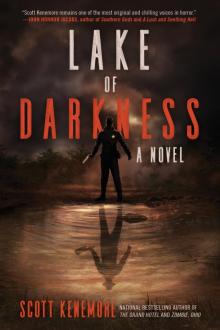 Lake of Darkness
Lake of Darkness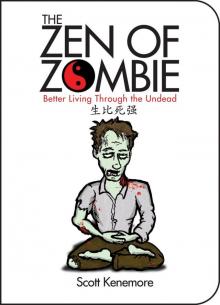 The Zen of Zombie
The Zen of Zombie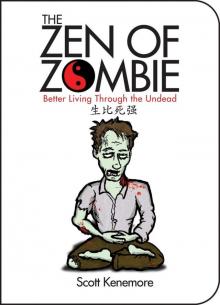 Zen Of Zombie (Zen of Zombie Series)
Zen Of Zombie (Zen of Zombie Series)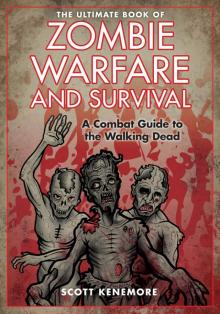 The Ultimate Book of Zombie Warfare and Survival
The Ultimate Book of Zombie Warfare and Survival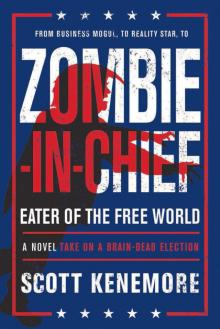 Zombie-in-Chief
Zombie-in-Chief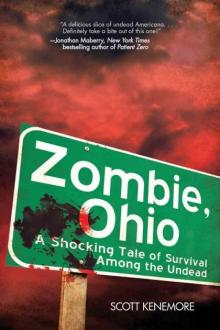 Zombie, Ohio
Zombie, Ohio Zombie, Illinois
Zombie, Illinois Zombie, Indiana
Zombie, Indiana